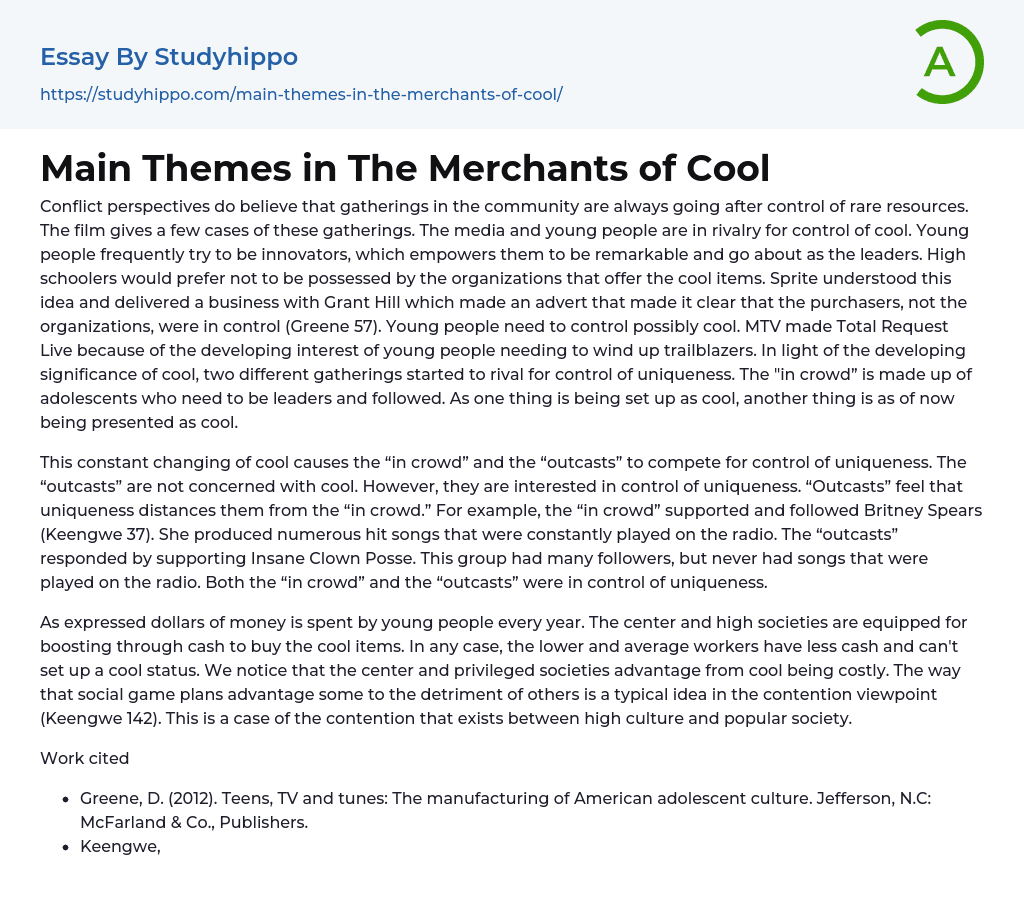According to conflict perspectives, community gatherings are constantly vying for control over scarce resources. The film provides several examples of these gatherings, specifically highlighting the competition between the media and young people in their quest for control over what is considered cool.
Young individuals often strive to be innovators, which enables them to stand out and act as leaders. Teenagers do not want to be controlled by companies that offer trendy products. Sprite recognized this idea and created a commercial with Grant Hill that emphasized the power of consumers over organizations (Greene 57). Young people desire to have control over what is considered cool.
MTV created Total Request Live in response to the increasing desire of young people to be trendsetters. Due to the growing importance of being cool, two distinct groups emerged, vying for do
...minance in terms of uniqueness. The "in crowd" consists of teenagers aspiring to be leaders and followed, always seeking the next cool thing. As something becomes established as cool, another thing is already being deemed as cool. This ever-changing notion of what is cool leads the "in crowd" and the "outcasts" to compete for control over being unique. The "outcasts," on the other hand, do not concern themselves with being cool.
However, the "outcasts" are interested in maintaining their uniqueness and believe that it separates them from the popular "in crowd." An illustration of this is seen when the "in crowd" showed support and admiration for Britney Spears (Keengwe 37), whose songs dominated the airwaves. In response, the "outcasts" chose to support Insane Clown Posse, a group with a significant following but whose songs were never played on the radio.
Both the "in crowd
and the "outcasts" exerted control over individuality. It is observed that young people spend significant amounts of money each year. The upper and middle classes have the means to enhance their status by purchasing trendy items, whereas the lower and working classes, having less money, are unable to establish a cool image. This highlights how the upper and middle classes benefit from the high cost of being cool. This notion of social arrangements benefiting some individuals at the expense of others is a prevalent concept in conflict theory (Keengwe 142).
This is a case of the conflict between high culture and popular society.
Work cited
- Greene, D. (2012). Teens, TV and tunes: The manufacturing of American adolescent culture. Jefferson, N.C: McFarland ; Co., Publishers.
- Keengwe, J. (2013). Research perspectives and best practices in educational technology integration. Hershey PA: Information Science Reference.
- Collaboration essays
- Dialogue essays
- Fake News essays
- Journalism essays
- Mass Media essays
- Media Analysis essays
- Media Bias essays
- Media Studies essays
- Message essays
- News essays
- Propaganda essays
- Radio essays
- Rogerian Argument essays
- Role of Media essays
- Social Media essays
- Social Media Marketing essays
- Social Networking essays
- Youtube essays
- High School Experience essays
- Plans after High School essays




